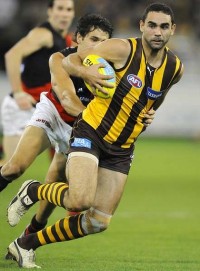 In this weeks edition of the SportStrap “How to Strap” series, we are going to take a closer look at how to strap a knee.
In this weeks edition of the SportStrap “How to Strap” series, we are going to take a closer look at how to strap a knee.
The knee can take a lot of punishment during activity playing sport, and in particular contact sports. So a proper taping technique is important for both knee injury prevention and sport injury management in sports people and athletes.
One of the most common knee ligament injuries is the medial collateral ligament injury, where the inside ligaments of the knee can be strained or damaged.
Learn How to Strap a Knee from an Expert
[toc]
I would like to share with you another video that shows a great technique for supporting the knee using Sports Tape, courtesy of highly experienced Sports Trainer, Cam Wray.
Cam has worked with many first class rugby teams such as England, South Africa, Australian Universities, the Australian Barbarians, Canada 7’s, Argentina 7’s and the Qld Reds rugby teams. Enjoy!
Best Knee Strapping Technique
[youtube]http://www.youtube.com/watch?v=L1InVcrHCl4[/youtube]
As you can see from the video, Cam’s method is both simple and gives great support to the medial ligament.
How To Tape A Knee
- In this technique the knee is slightly bent at 10°, anchors are applied above and below the knee.
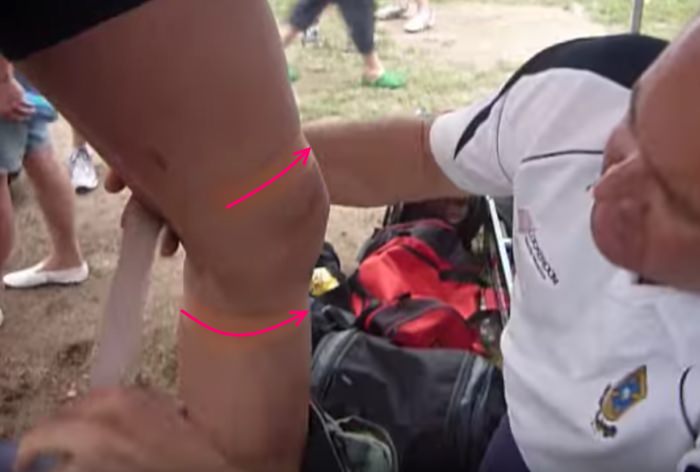
- Apply 3 series of basket-weave strips on the inside of the knee, criss-crossing the inside of the knee to give the medial ligament support and protection. Ensure the strips overlap by approx 50%.
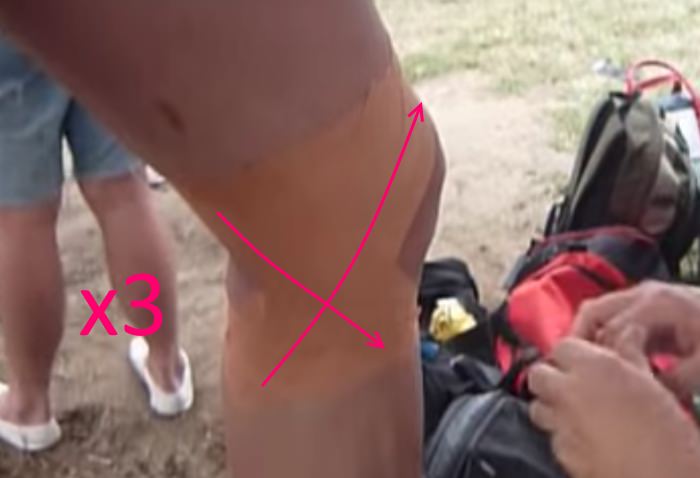
- Apply 2 medial crossover strips from the top anchor on from the inside of the knee, around the back to bottom anchor on the outside of the knee. Ensure the strips overlap the previous strip by about 50%.
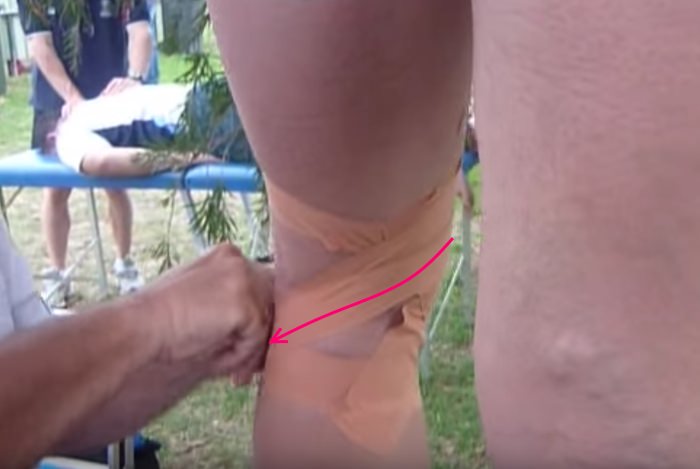
- Wrap with Elastic Adhesive Bandage, start at the top anchor and wrap around once and then diagonally down to the bottom anchor on the inside of the knee.
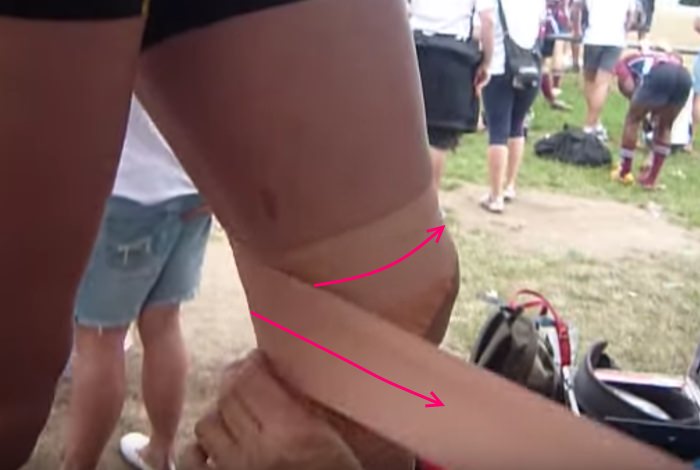
- Continue to wrap the knee with EAB around the bottom anchor.
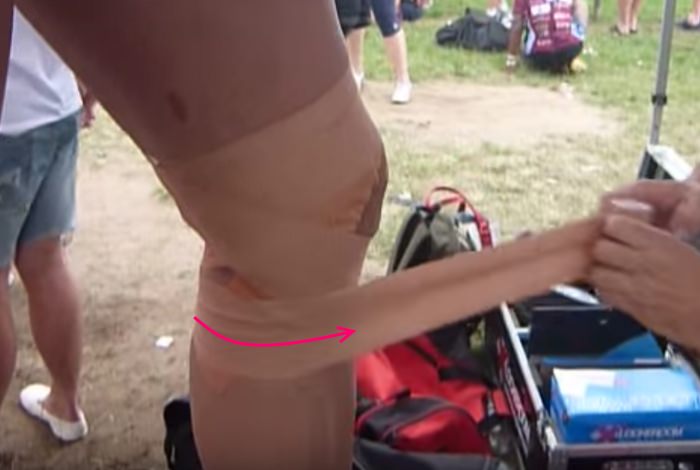
- Continue wrapping around the bottom anchor then diagonally back up to the top anchor on the inside of the knee. Finishing on the outside of the knee at the top.
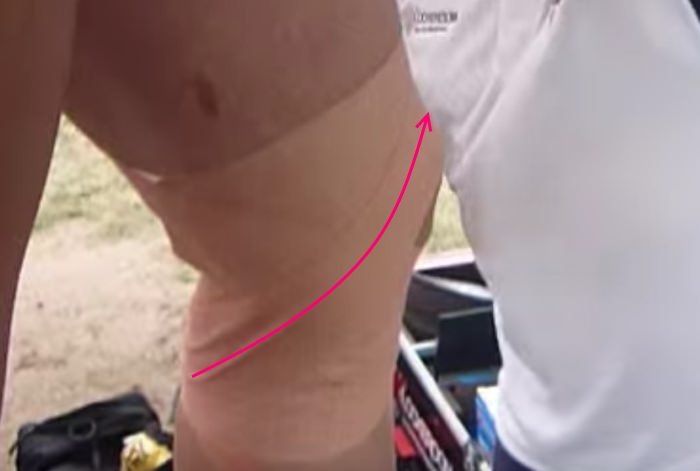
- Remember to rub down the the tape to assist with adhesion.
As well as using the correct knee taping technique, its also important to use quality supplies for the job, so lets have a look at what is needed.
What items do you need to Strap a Knee?
To strap a knee properly, you are going to need the following items:
[bc_product_display id=”248″]
[bc_product_display id=”62″]
Optional items you may wish to use:
[bc_product_display id=”98″]
[bc_product_display id=”169″]
[bc_product_display id=”90″]
Preparation to Tape an Knee
For optimum results when taping the knee, it is recommended to prepare the knee by doing the following:
- Shave off any hair around the area on the knee being taped.
- Cover any wounds with Non-Stick Wound pads.
Correct Tape Tension
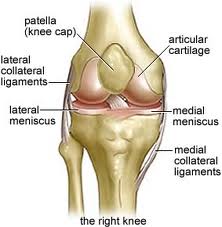
Its also important for the athletes comfort and performance, that the knee is not taped to tight, in particular the anchors above and below the knee, as it will prevent the blood flow around the knee and restrict movement.
To strap a knee to the correct tension, two good tests to do is the pinch test (as mentioned last week), & also knee squats. If the anchors don’t restrict your movement or flexing of your calf and hamstring to much, then the taping tension is right.
More “How to Strap” Articles?
This article is the second of many of SportStrap’s “How To Strap” series. Other articles in the “How to” series can be found below:
-
- How to Strap an Ankle
- How to Strap a Shoulder
- How to Strap a Thumb
If you found this article helpful please complete the following:
-
- Subscribe to our Newsletter below to receive more “How To” articles as released.
- Leave a comment below, to let me know:
- Your experience with strapping a knee,
- Or any questions you have about strapping knees!
- Add your “Like” to the SportStrap fan page
Have a most outstanding day,
Cade Arnel
SportStrap.com.au

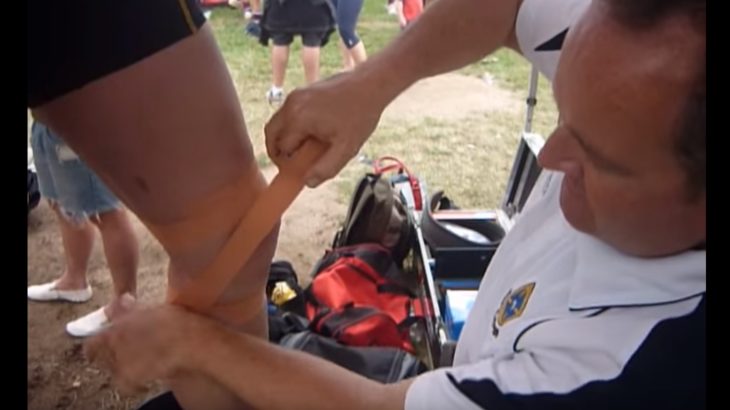
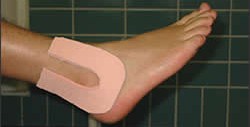 Shave off any hair around the area on the ankle being taped.
Shave off any hair around the area on the ankle being taped.